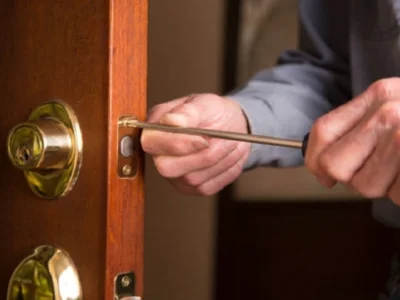Mold can be hidden in unexpected places. Find out how to detect it, understand the risks, and prevent growth for a safe, healthy home.
One of those things most people overlook until it gets very severe is mold. Good locations for it are damp, dark, and wet ones. It enjoys remaining invisible and out of consciousness. At first, mold might seem like a minor issue, but if nothing is done about it, it can rapidly become a big risk for building safety and health. Though it can be difficult to find, knowing how to recognize mold will save you time, money, and a lot of stress down the road.
Recognizing the Signs of Hidden Mold
Mold isn’t always easy to see. It often hides behind walls, under rugs, or in places like basements and attics that don’t get enough air flow. If you can’t see the mold itself, here are some common signs you should keep an eye out for:
Persistent Musty Odor
You might have mold if you smell something strong and unpleasant that won’t go away no matter how much you clean. Mold gives off chemicals that give things this strong smell, even if it’s not obvious.
Unexplained Allergic Symptoms
Mold may be the cause of coughing, sneezing, or itchy eyes that you or your family members are having at home. When there is a lot of mold growth, these signs often get worse.
Discoloration or Stains on Surfaces
Mold can sometimes look like spots that are black, green, or white. Even spots that look like dirt or water stains could be signs of mold growth below the surface.
Recent Water Damage
After water damage, mold often grows. If your home recently had a flood, leak, or pipe problem, the water could be causing mold to grow in places you can’t see.
Common Areas Where Mold Hides
To find mold problems early, you need to know where to look. Mold can grow anywhere there is water and organic matter, but some places are more likely to have secret infestations.
- Behind the Drywall: When there is water damage, moisture can get stuck in the walls, making it a great place for mold to grow.
- Under Flooring: Mold can grow under carpets, floors, and even tiles if water gets under them.
- Inside HVAC Systems: Heating and air conditioning ducts can trap moisture and spread mold spores all over your house.
- Mold can grow behind dishwashers, freezers, and washing machines if they leak or don’t let enough air flow through.
- Mold problems are common in attics and basements because they don’t have enough air flow and are very wet.
Health Risks of Hidden Mold
Mold doesn’t just make your home look and smell bad; it can also be very bad for your health. Mold-related illnesses are more likely to happen to people who have allergies, asthma, or weak immune systems. Some of the most common health effects are breathing problems, skin irritations, and tiredness. Long-term contact with some kinds of mold, like black mold, can cause more serious health issues, such as long-term lung conditions.
If you have any strange symptoms that get better when you leave your home, you might want to get a professional mold check.
Steps for Identifying Mold in Your Home
You can see some mold problems with the naked eye, but others need a more thorough investigation. You can do the following:
- Start by going through it: First, look at places that get a lot of wetness or have had water damage in the past.
- Look for Smells: Pay close attention to places that smell musty for a long time, like basements, bathrooms, and kitchens.
- Use a flashlight: Light up dark spots, behind furniture, and under sinks to look for mold or water damage.
- Check the humidity levels. Mold is more likely to grow in places where the humidity is high (above 60%). A hygrometer can tell you how wet it is in your home.
- See a professional if you want peace of mind or if you believe there is mold somewhere else. < Even in difficult-to-reach locations, they are aware of how to spot mold and eliminate it.
For those in need of professional assistance, Water Damage Pros – mold inspection professionals are a trusted option. With their experience and advanced techniques, they can locate and remediate mold, helping to restore your home to a safe and healthy condition.
Preventing Mold Growth in the Future
It is always better to stop mold from growing than to deal with an infection. Taking care of leaks right away is one of the most important steps. If you have plumbing or roof leaks, you should fix them right away so that water doesn’t build up and cause mold to grow. Another good way to lower humidity and keep mold away is to make the air flow better, especially in bathrooms and kitchens.
Controlling the amount of air is also very important. Using a dryer to keep the humidity inside your home below 60% can make it less likely for mold to grow. It’s also important to clean and check things often. Look for signs of wetness or mold growth in damp places like under sinks, behind appliances, and around windows.
If you’re remodeling or adding on to your home, you might want to use materials that won’t grow mold. Mold-resistant drywall and paint are great choices for places with a lot of wetness. By taking these cautious steps, you can keep your home free of mold and avoid future problems.
When to Call for Professional Help
Some mold problems can be fixed by the homeowner, but mold outbreaks that are hard to see or spread out need to be taken care of by a professional. Professionals not only find and get rid of the mold, but they also fix the problems that led to it so they don’t happen again. Mold inspectors use high-tech tools like infrared cameras, moisture meters, and air quality tests to find mold that people would miss otherwise.
If you act quickly, you can avoid having to pay more to fix things later on and rest easy knowing that your home is safe.
Conclusion
Though difficult to notice, mold doesn’t have to remain invisible. By spotting mold, understanding how it could compromise your health, and acting to stop it, you can keep your house clean and safe. If you believe mold exists in your house, consulting a professional will ensure the issue is corrected properly, providing you with peace of mind and a safe place for your family to reside.
Choice Home Warranty George Foreman in 2024










Comments